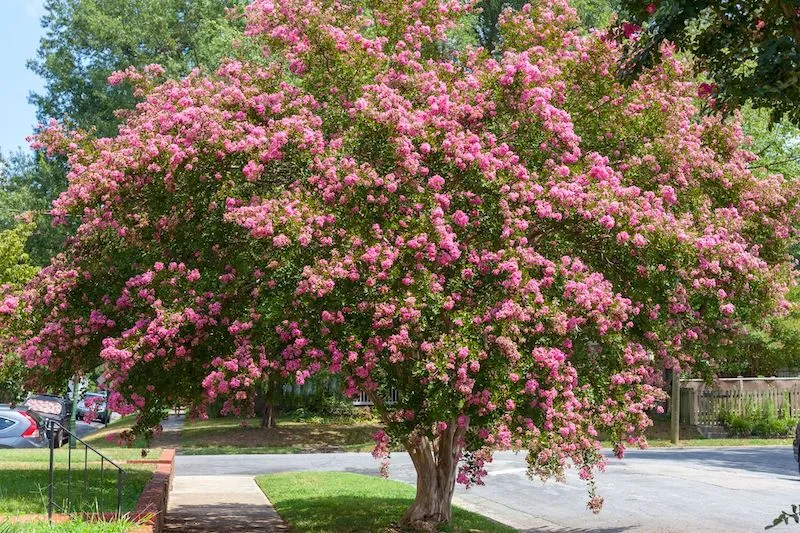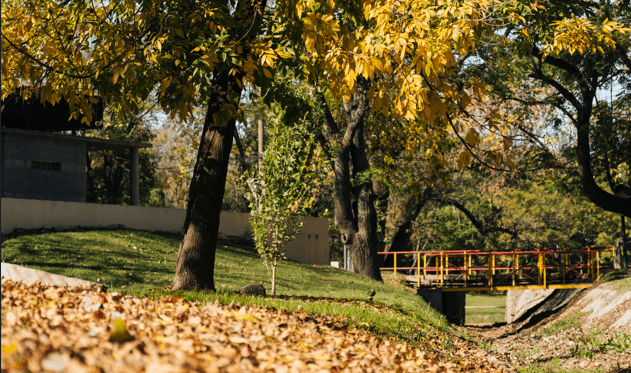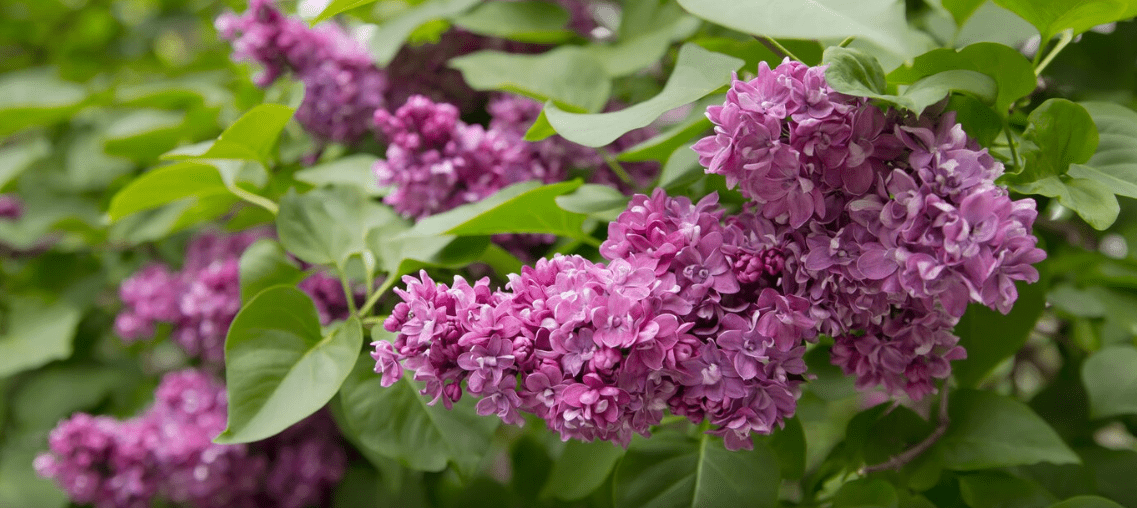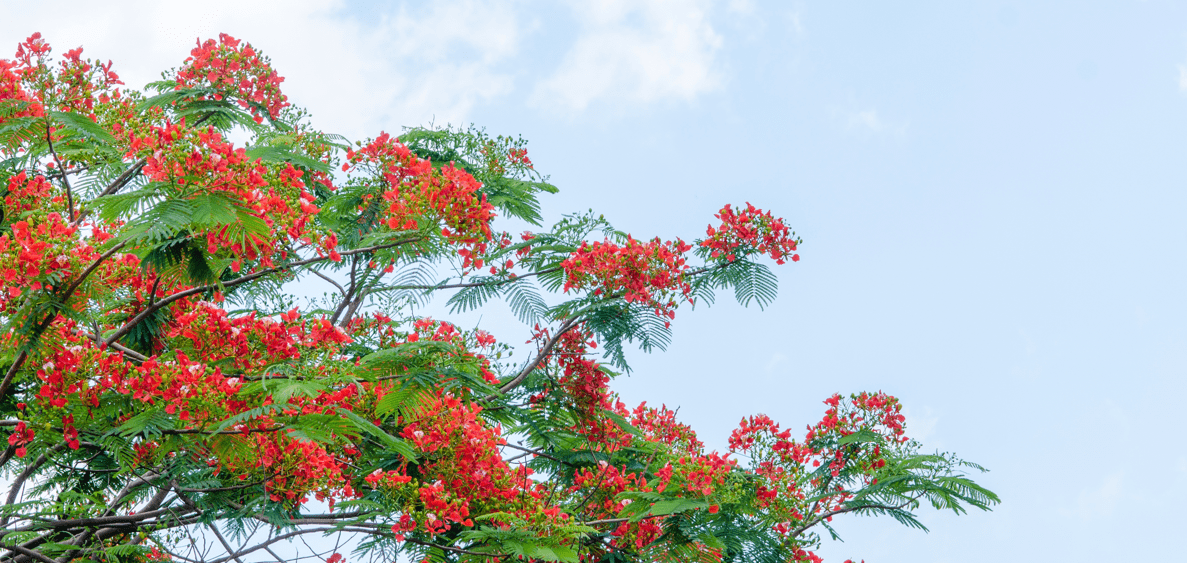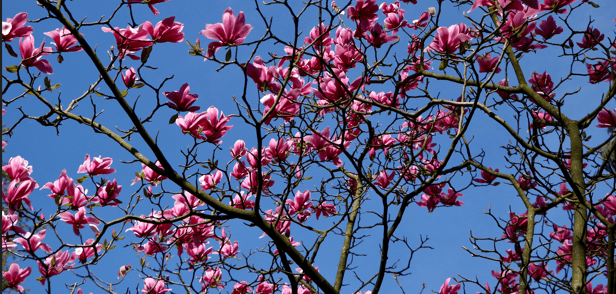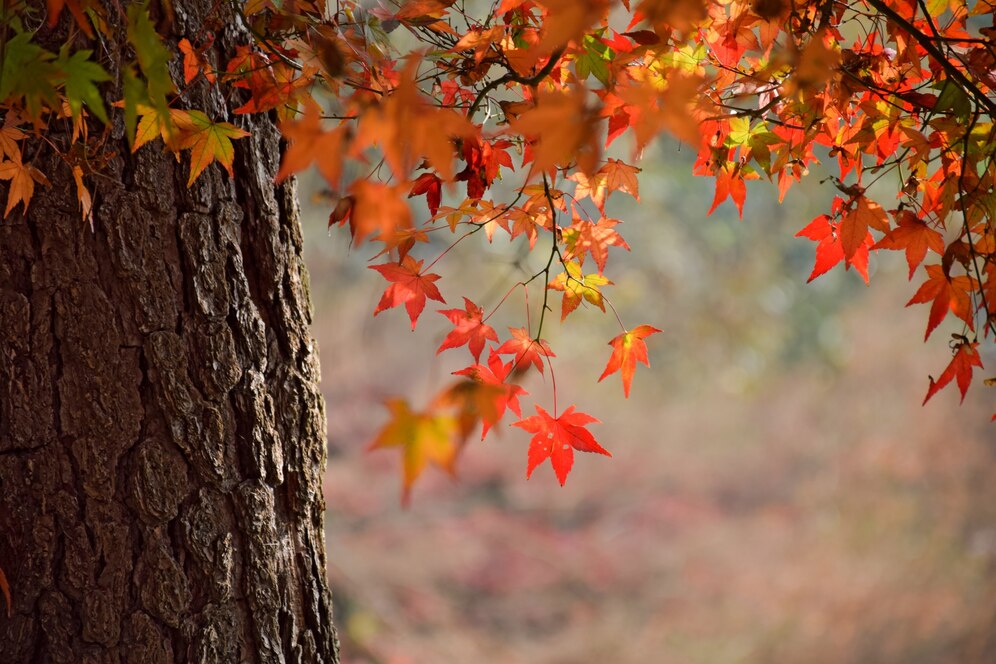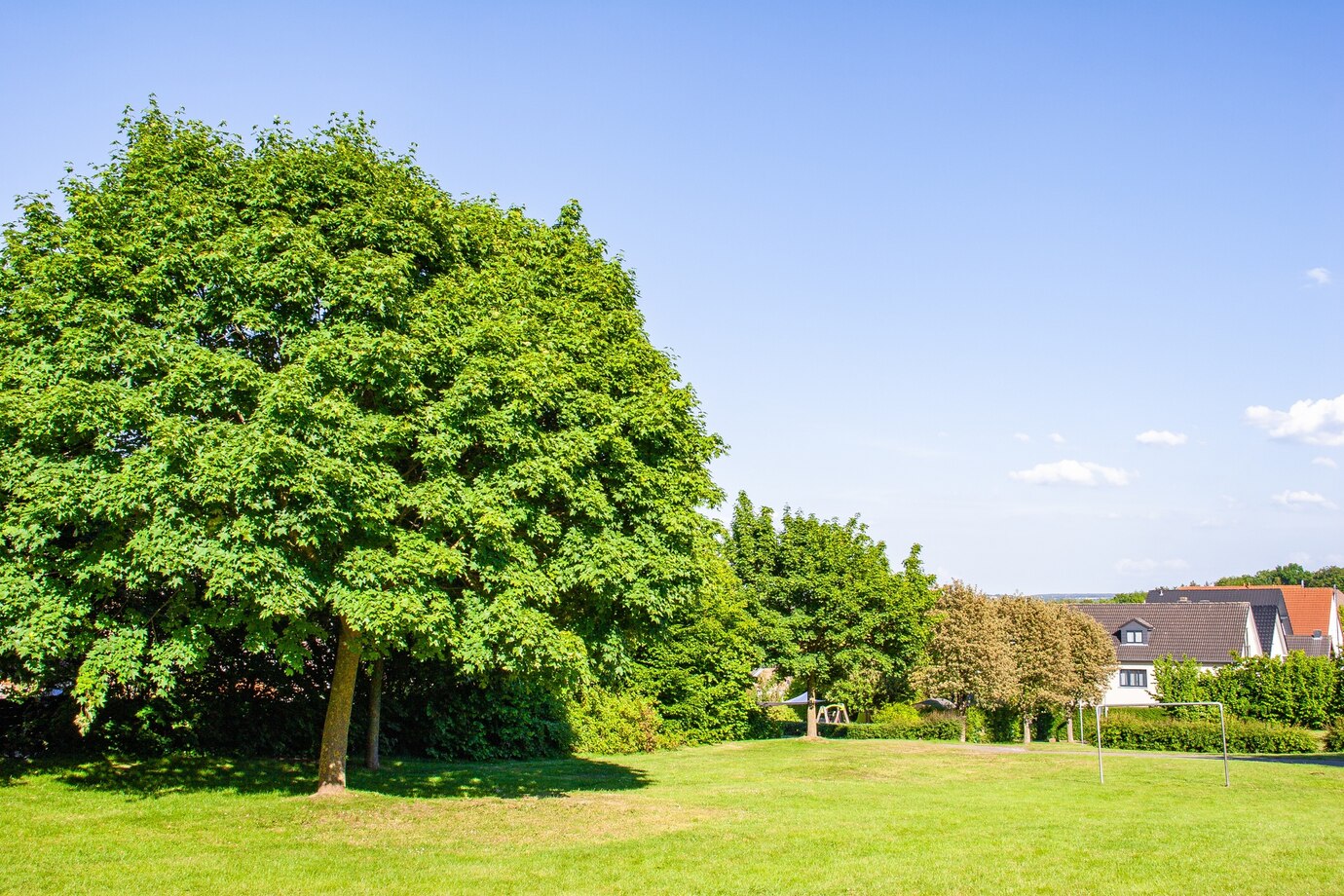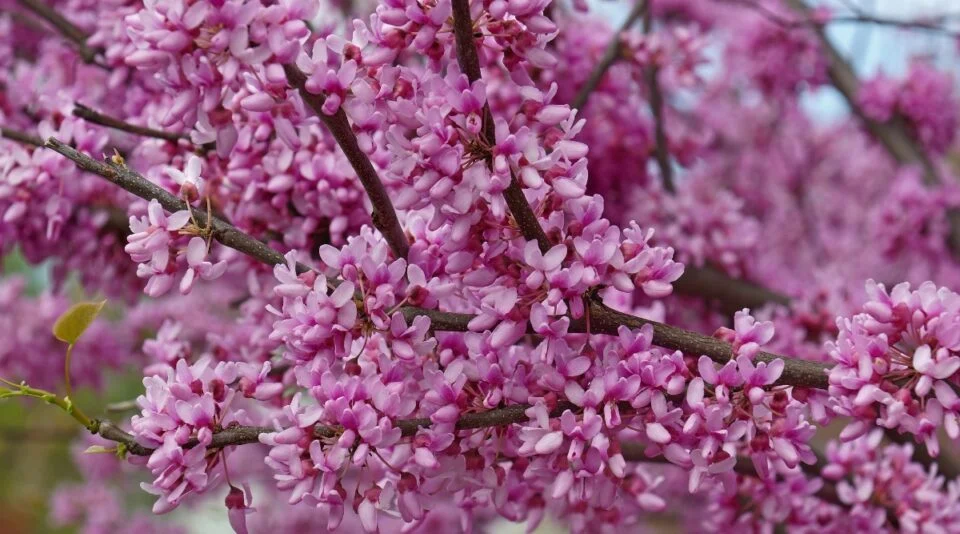Crepe myrtle (also spelled crape myrtle), shrubs, and trees bring vibrant, year-round appeal to your garden. Their stunning summer blooms, vivid fall foliage, and striking peeling bark in winter add interest through every season. They are available in various sizes, from compact 2-foot dwarf shrubs to towering trees. Crepe myrtles also come in various colors, including pure white, rich reds, and deep purples. You can grow them as single-trunk specimens or multi-trunk forms, making it easy to find the ideal crepe myrtle to suit your landscape.
Table of Contents
ToggleAbout Crepe Myrtle
Crepe myrtle (Lagerstroemia), sometimes spelled crape myrtle, is a sizable plant known for its long blooming period, which lasts from late spring through summer and into early fall in warmer climates. While some regions refer to it as a crepe myrtle tree or a large shrub, it is botanically classified as a tree and typically loses its leaves in late autumn.
This plant has gained popularity in gardens due to its diverse flower colors, bright green foliage, and distinctive bark that exfoliates in irregular patches. It reveals a beautiful mosaic of greens, browns, and pinks. Crepe myrtles are also drought-tolerant and heat-resistant, which are well-suited for warmer environments. As fall approaches, their leaves transform into vibrant shades of orange, red, and yellow, adding seasonal interest to the landscape.
4 Common Types of Crepe Myrtles
There are numerous cultivars and varieties of crepe myrtles that differ in height, bloom size, and flower color. Here are four popular choices:
‘Natchez’ (Lagerstroemia indica var. fauriei): This cultivar features a long blooming season with soft white flowers lasting about three months from early to mid-summer. ‘Natchez’ grows as a single-trunk tree, reaching around 30 feet at maturity. In fall, its leaves turn in beautiful shades of orange and red. It thrives in full or partial sun.
Queen’s Crepe Myrtle (Lagerstroemia speciosa): Known as the giant crepe myrtle, this variety grows 25 to 30 feet tall and bears large clusters of white, purple, and pink flowers. It prefers full sun and showcases bright fall foliage alongside its distinctive mottled, exfoliating bark. Queen’s Crepe Myrtle is also known for its disease resistance.
‘Tuscarora’ (Lagerstroemia indica): A mid-sized, multi-trunk cultivar that reaches 15 to 20 feet tall. When young, it can resemble a large shrub. It grows quickly, and features muted pink flowers. The leaves emerge red in early spring before maturing to a deep green later. This cultivar is also resistant to mildew.
‘Centennial Spirit’ (Lagerstroemia indica): One of the most popular cultivars, this small tree produces large, long-lasting dark red flowers even in hot weather. Its flowers appear in late spring to early summer and attract butterflies.
How to Plant Crepe Myrtles
Plant crepe myrtles in regions with mild winters and warm summers for the best results. To promote vibrant summer blooms, aim to plant between late fall and early spring. While crepe myrtles tolerate most soil types, ensure the planting site has good drainage.
- Choose a sunny spot: Crepe myrtles thrive in full sun for optimal growth and flowering.
- Water the root ball: Before planting, soak the root ball thoroughly while still in its container.
- Dig the planting hole: Make the hole about 3x wider than the root ball but only as deep as the root ball itself.
- Check soil pH: Crepe myrtles thrive in acidic soil with an optimal pH of 5.0 to 6.5.
- Plant carefully: Gently loosen any tangled roots before placing the tree in the hole. Position it so the base sits level with the ground, then backfill and firmly press the soil around the roots.
- Water deeply: After planting, soak the soil around the crepe myrtle thoroughly to help settle the roots and encourage establishment.
How to Care for a Crepe Myrtle
Although crepe myrtles are low-maintenance, proper crepe myrtle care is still essential for them to thrive. Mulch the soil around the base with peat moss to help retain moisture. Regularly remove small shoots, called suckers, that grow from the lower part of the plant. After the flowers fade, deadhead spent flowers to promote a second flush of blooms in late summer.
Pruning should be done in winter or early spring to avoid harming new growth. Experts recommend avoiding severe pruning, often called “crepe murder,” which can weaken the tree. Instead, trim branches lightly by a few inches to shape the tree before the growing season starts.
Keep an eye out for pests like aphids and monitor for diseases. Older crepe myrtle varieties can be prone to powdery mildew, which may require fungicide treatment at the first sign of infection. Fortunately, many newer hybrid cultivars have good resistance to this disease.

